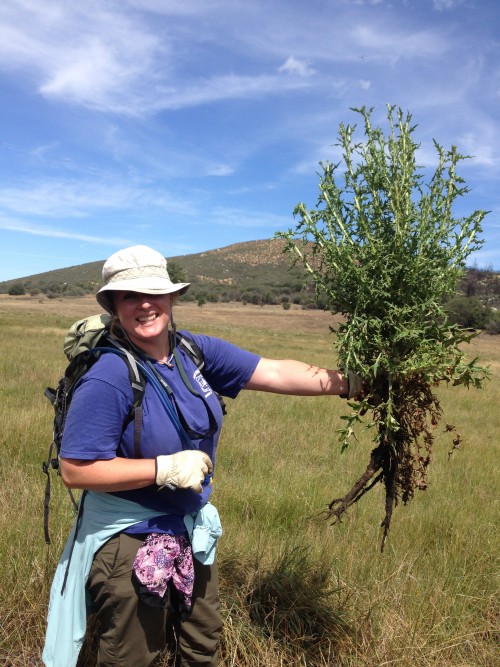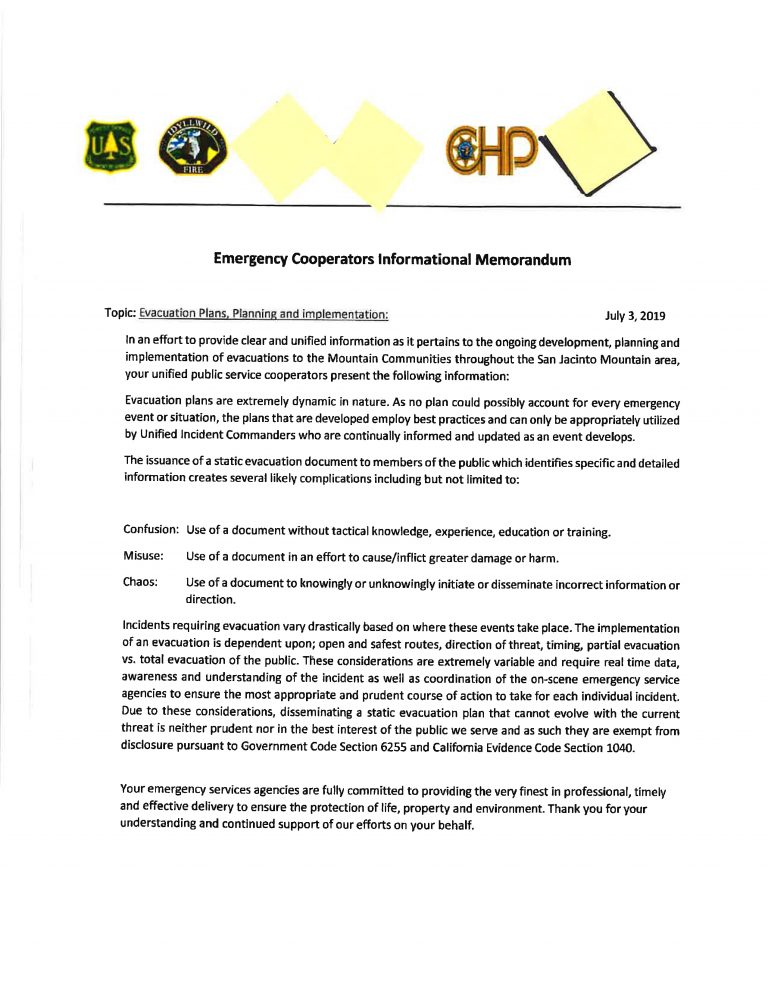Forest Service fighting the Bull Thistle invasion: Efforts employed to protect native plant life

Photo courtesy Debra L. Nelson, San Jacinto Ranger District botanist for the San Bernardino National Forest
The effects of the 2013 Mountain Fire continue to threaten the local biosystem even though the flames were extinguished long ago.
Last month, Debra Nelson, U.S. Forest Service botanist on the San Jacinto Ranger District, led an expedition into Garner Valley’s Johnson Meadow to help protect native plants from the encroachment and invasion of the Eurasian Bull Thistle.
This non-native plant has spread across the continent, both in the U.S. and Canada. It is capable of invading fields, meadows, pastures, wastelands and roadsides. The Bull Thistle outcompetes native plant species for space, water and nutrients.
Nelson said the native species that need protection from the Bull Thistle include the Mojave tarweed, Palmer’s mariposa lily, southern mountain skullcap, San Bernardino aster, as well as Ziegler’s tidy tips, a FS watch-list plant species.
With help from the Friends of the Desert Mountains, the Friends of the Desert Mountains Volunteers, Southern California Edison, the Bureau of Land Management and the Urban Conservation Corps, a division of the Southern California Mountains Foundation (formerly known as the San Bernardino National Forest Association), Nelson’s team tried to reduce or eliminate the Bull Thistle’s ability to spread and populate new areas.
The Bull Thistle now populates the unburned western portion of the meadow. The Bull Thistle takes two years to produce seed, then the plant generally dies.
The Forest Service wants to control this population by preventing it from going to seed, which the wind will carry into the uninfested, bare and vulnerable burned areas. The light seeds have a fluffy pappus, which the wind easily carries. If a huge Bull Thistle seed rain were to fall on the burned area, the native species would have a hard time competing and recovery of the native plant community would be threatened.
Crews used hand clippers to lop the seed-producing flower heads from the stems, then cut the stems to the ground to reduce the chance of re-sprouting. The flower heads were collected in large, heavy-duty, 42-gallon garbage bags and hauled off site.
“In 2014, all told, the first year, over 100 huge bags of thistle seed heads were removed from the site, significantly reducing the threat to the vulnerable burned portion of the meadow,” Nelson wrote. “Since then, we have tried to follow-up this year, each time the population gets a bit smaller so our work is paying off. Also, the burned portion of the meadow did not become infested.”


